Baffle Step
Baffle Step as a Pressure Director, Not Booster:
While baffle step doesn’t create an overall gain in sound pressure, it acts like a pressure director, concentrating sound waves in the forward direction (towards the listener) for frequencies above the baffle step frequency. This can be visualized as:
At low frequencies the sound wavelength is large compared to the baffle size:
Sound from the driver radiates freely in all directions (think of a sphere),resulting in omnidirectional radiation (4π steradians).
When frequency increases and the wavelength becomes comparable to the baffle dimensions:
-
The cabinet dimensions start to influence the sound radiation pattern and pass the radiation to 4π to 2π leading to a pressure increase in the forward direction due to a more focused radiation pattern (generaly +6dB SPL).
-
Diffraction around the edges creates additional wavefronts at transition from 4π to 2π that interfere with the original waves from the driver. These interferences will causes cancellations or sommations at transition. Diffraction and Standing Waves article goes deep in these two concepts.
This combined effect leads to a global pressure increase in the forward axis from a frequency related to baffle dimensions and a beam of sound at transition.
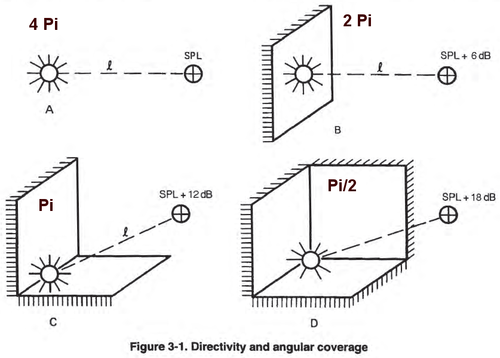
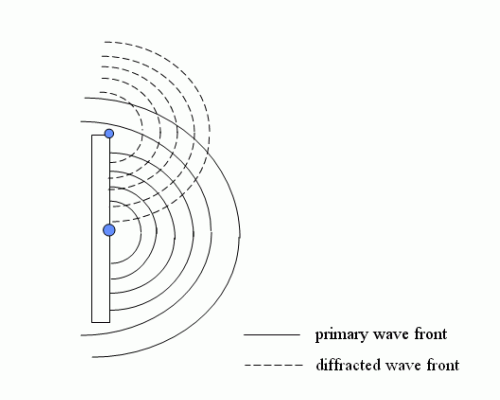
The Energy point of view
While the baffle analogy is helpful, it’s important to remember that baffle step doesn’t create a uniform gain of +6dB SPL.
We take here as landmark the dB SPL (so in front of the speaker) in 4π, some parameters as woofer sensitivity are given in 2π on a big ISO baffle, so from this point of view, if we take SPL in 2π as landmark it’s no more +6dB SPL but -6dB SPL.
This difference of front pressure is in fact more a 6dB delta due to a difference in energy distribution than a plus or minus, to the energy point of view there is no loss or gain, the energy remain the same, only the his direction is changing, creating a energy focusing effect.
How to simulate it
The pressure increase in the forward direction is gradual and depends on the specific baffle size and frequency, as we can simulate it in VituixCAD with the Diffraction tool:
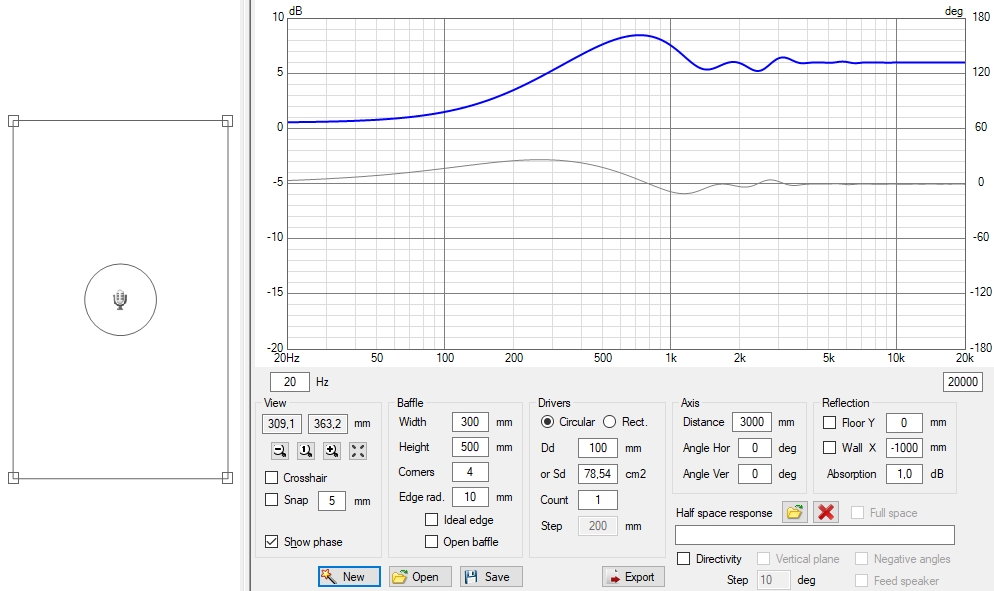
Analogy, Baffle Step as a 180-degree Horn:
The analogy of a 180-degree horn is apt. Similar to a horn, the baffle acts to channel and focus sound waves in a specific direction. However, unlike a true horn that uses its shape to progressively increase pressure by loading and acoustic loading, the baffle doesn’t create new energy. It simply redirects existing energy.
Addressing the Decrease in Other Directions:
The pressure increase in the forward direction comes at the expense of sound pressure radiating to the sides and back. This decrease happens because:
-
The diffracted waves also travel sideways and backwards, but they might not be perfectly in phase with the original waves, leading to destructive interference and a decrease in pressure in those directions.
-
The reduction in radiation area from 4π steradians (omnidirectional) to 2π steradians (forward direction) inherently represents a increased sound pressure in a spedific direction, to the listener, so it will be attached to a decrease sound pressure off axis.
Analogy, The Water Fountain:
Imagine your speaker as a water fountain:
-
At low frequencies: The water sprays out in all directions, like a big sphere (think of a beach ball filled with water spraying everywhere). This is similar to how sound behaves at low frequencies from a speaker without a baffle step effect.
-
As the water pressure increases (higher frequencies): The water starts to travel further, but the edges of the fountain (like the edges of the speaker cabinet) restrict the spray. This makes the water shoot out more in the forward direction (towards you) and less to the sides and back.
This is similar to what happens with baffle step:
-
Higher frequencies are “focused” more towards the listener. This can sound a little louder in the front compared to the sides, especially for sounds just below the baffle step frequency.
-
However, the total amount of sound energy doesn’t necessarily change. It’s just distributed differently, with more emphasis on the front.
Baffle mistakes and solutions
For tweeter without waveguide, put it in an asymetrical position in the baffle is a good solution for dispatch the baffle diffraction (beaming), but by keeping the medium (if there is one) perfectly vertical to the tweeter.
The worst baffle step is given by “vintage” way to do, provoking a lot of diffraction impacting both on and off-axis:
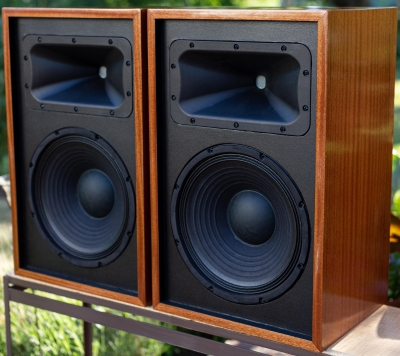
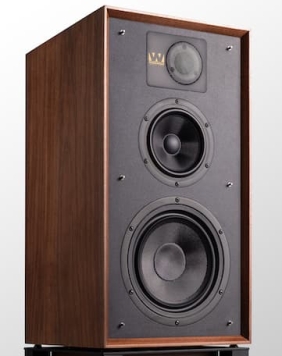
As seen in the midrange narrowing article, a big baffle will not necessarily solve the problem with a horn, as we have to pass from the profile acceleration of the horn to a 180° flat no acceleration surface, we have to accelerate then decelerate slowly for reach the big flat surface (it can be a wall in in-wall). The size of the panel, if he is not infinite (wall), will just put the problem further to the point of view of edge diffraction.
For waveguide or horns it’s always better to have an continuous profile to never create a flat area between the horn and the edges, as seen here with a X-shape X25:
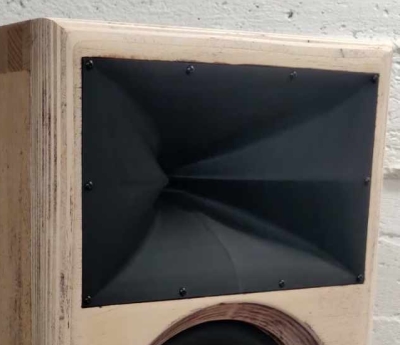
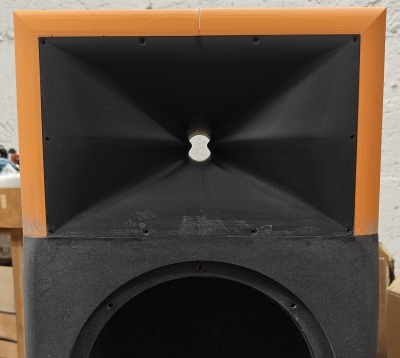
Additional Considerations:
-
The specific frequency response of the baffle step depends on the size and shape of the cabinet. A wider baffle will have a lower baffle step frequency compared to a narrower one.
-
The proximity of the speaker to walls and other boundaries can further complicate the pressure distribution due to additional reflections.
By understanding the interplay between diffraction, constructive interference, and radiation patterns, we gain a deeper appreciation for the complexities of baffle step and its impact on speaker performance.